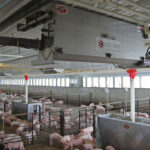What Can Be Expected From New Milk Market Observatory – Q & A With CEJA
The European Commission launched its new Milk Market Observatory in April. In this month’s regular column from CEJA (European Council of Young Farmers), we asked President, Matteo Bartolini to outline what can be expected from this new body. MF: What is...
What Can Be Expected From New Milk Market Observatory – Q & A With CEJA
The European Commission launched its new Milk Market Observatory in April. In this month’s regular column from CEJA (European Council of Young Farmers), we asked President, Matteo Bartolini to outline what can be expected from this new body. MF: What is...The European Commission launched its new Milk Market Observatory in April. In this month’s regular column from CEJA (European Council of Young Farmers), we asked President, Matteo Bartolini to outline what can be expected from this new body.
MF: What is the purpose of the Milk Market Observatory (MMO) and what is the background?
MB: It is designed to publicly provide data transparency, complemented by market analysis, short-term outlook reports and regular meetings of an economic board. This will strengthen the Commission’s capacity to monitor the dairy market and help the sector adapt to the new environment once the dairy quota system which has been in place for 30 years is abolished on 31 March 2015.
The Commissioner first initiated the idea for such an observatory at the Milk Conference in September 2013 which featured a number of CEJA young farmers. The conference brought together all stakeholders in the dairy supply chain – from dairy farmers to milk processors and retailers – to discuss the post-quota future of the sector.
MF: How important is the dairy sector in the EU?
MB: Milk is produced in every single EU Member State and, as a single product sector, it is valued at approximately 15% of all EU agricultural output. The EU is a major player in the world dairy market as the leading exporter of many dairy products, in particular, cheeses. For some Member States, it forms a crucial part of the agricultural economy. Total EU milk production was estimated at around 152 million tonnes in 2011 but this is expected to grow as global demand escalates and EU quotas are phased out. It is no secret that dairy quotas can be a contentious issue in Europe and so the only widely supported concrete suggestion of the Dairy Conference was that of the establishment of the Milk Market Observatory.
For the full article, please click here
If you would like to get in touch with Mr. Bartolini or CEJA, email allusers@ceja.eu.




